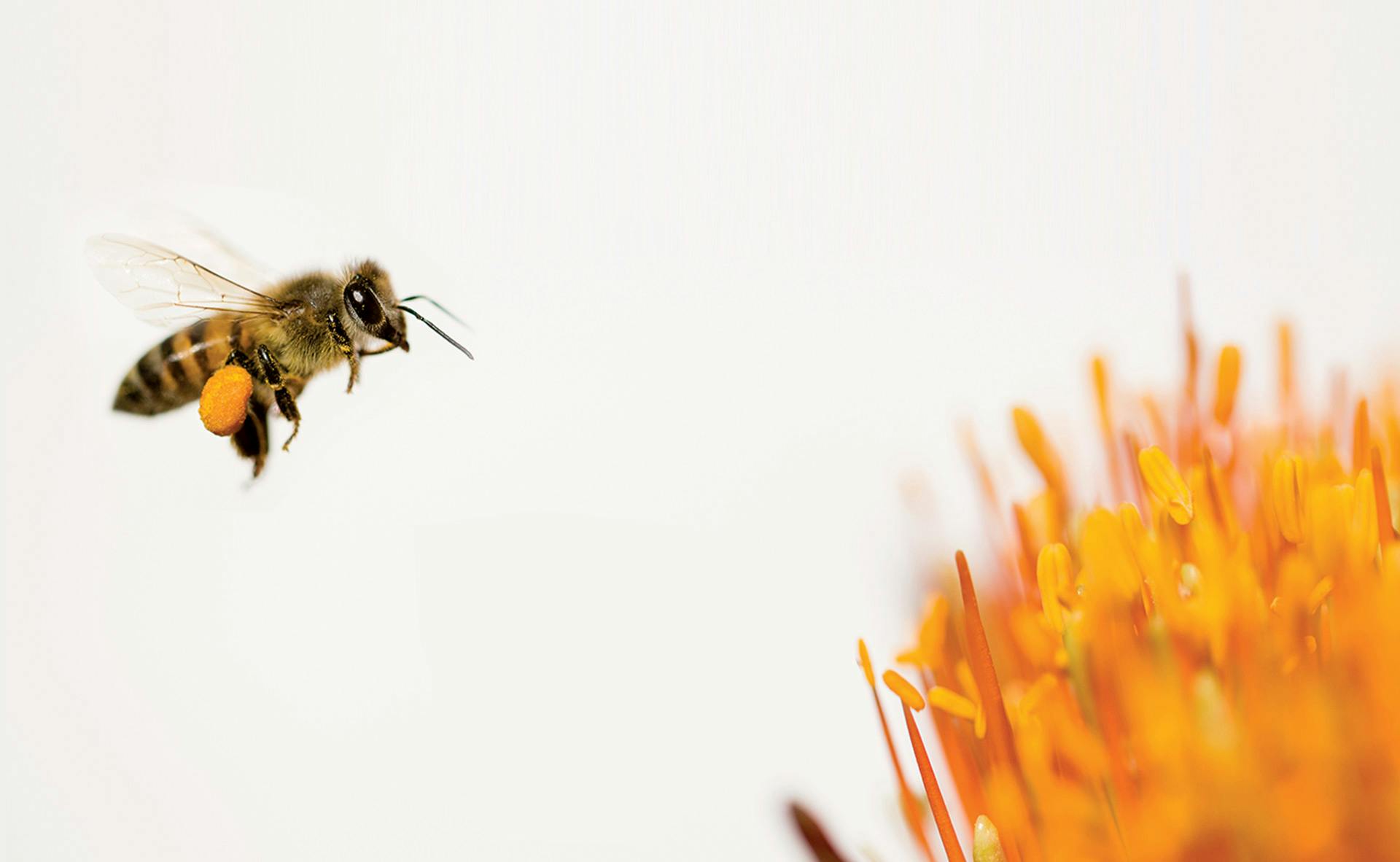
Honeybees continue to die. Colony collapse disorder (CCD), the sudden disappearance of entire swarms, was first observed in 2006, and remains a mysterious phenomenon. More than a decade of studies, hypotheses, and tests have failed to find a unique cause. We still don’t know why honeybees abandon their hives, leaving queen and brood to die. In countries such as China and Brazil, the situation is so dire that farmers have resorted to hand pollination. Over the past few years, experts have come to believe that CCD happens for a number of interconnected reasons.
The first culprit is a class of pesticides known as neonicotinoids, introduced in the 1990s but severely restricted in the European Union since 2013. They’re based on nicotine, which is neurotoxic to honey and wild bees, as well as other pollinators. (Nicotine’s use as a pesticide is an old practice. Throughout the 19th and 20th centuries, gardeners sprayed their crops with tobacco-infused water.) Neonics, as they are also called, work systemically: absorbed by seeds and leaves, they spread to the whole plant and soil. While evidence on the direct correlation between these insecticides and CCD is inconclusive, a 2017 study found traces of at least one neonicotinoid in 75 percent of honey samples across the world—testimony to the insects’ exposure.
Another great enemy of honeybees is the varroa mite, widely found in the United States since the 1980s. The tiny parasite lays eggs on bee larvae and pupae, thus preying on “baby” bees until they become adults, all while weakening and infecting them with a number of viruses. Left untreated, varroa mites can kill entire colonies within months, while also using host bees to propagate to new hives. Together with the tracheal mite, and pathogens like Nosema apis, the varroa mite represents a major threat and a constant concern for beekeepers.
On a large scale, honeybees are also having a harder time finding reliable food and water. The ever-growing world urbanization rate forcibly reduces green spaces. Plus, agricultural business models based on monocultures reduce biodiversity, affecting bees in two ways. First, each bee species prefers different plants, which they may not be able to locate if surrounded by one crop. Second, monocultures blossom at the same time and therefore do not represent a long-lasting food source. Furthermore, some honey producers substitute high percentages of honey (produced by bees as food for winter) with sugar water to maximize gains. Because sugar water lacks the nutrients and minerals found in honey, its substitution beyond a certain percentage has been linked to a weaker immune system and reduced survival rates in honeybees.
Saving the bees thus requires a composite effort, which only a range of combined solutions can accomplish. EU institutions are currently considering a complete ban on neonicotinoids, while single countries such as Italy and France already restrict or ban some of their applications. Usage of these pesticides is also limited by Canadian regulations and completely banned within the cities of Montreal and Vancouver. In the U.S., the states of Maryland and Connecticut now forbid the sale of neonics to private citizens.
Monsanto’s Dr. Jerry Hayes, former president of the Apiary Inspectors of America, is among those exploring technological solutions. His approach consists of developing RNA interference (RNAi) material, which kills varroa mites and which honeybees could ingest through sugar water. Similar experiments are being conducted at Michigan State University and at the University of Hohenheim in Stuttgart, Germany. A recent study at Hohenheim led to a serendipitous discovery that was published in Nature in January 2018: lithium chloride, used as a vector for the RNAi, is deadly to varroa mites on its own. Research is ongoing on all these potential solutions to the threat posed by the deadly mite.
Community-based initiatives are also gaining ground across the U.S. Associations such as the nonprofit Honeybee Conservancy provide guidance and resources for the installation of beehives in gardens, including at schools and senior citizens centers, as well as assistance in choosing the right plants for pollinators. So far, they have helped individuals in 35 states install 165 hives, for a total of 3.4 million bees. The U.S. Fish and Wildlife Service also offers advice on how to attract pollinators to gardens. Another community-based approach is the recently launched “bee-saving paper,” a glucose-loaded paper sheet designed to look like a meadow in UV light—in other words, a portable food source for bees.
If worst comes to worst, could we replace bees with tiny drones? In 2017, scientist Eijiro Miyako at Tokyo’s National Institute of Advanced Industrial Science presented a proof of concept for a pollinating miniature drone featuring horsehair covered in a sticky gel. According to Miyako, the drones, used in combination with a GPS and an artificial-intelligence system, could become a viable option. Similarly, in 2014, researchers at Harvard University presented RoboBees. These “autonomous flying microrobots,” since improved, can dive in and out of water, as well as swim. RoboBees are designed for a variety of missions, including environmental monitoring, but also to support crop pollination in the future.
Failing to find a solution for the decline in bee populations would have catastrophic consequences, since a third of all our food crops depend on them. Given the breadth of the problem, we need a concerted effort on multiple fronts—first, by requesting a comprehensive policy plan for bees that protects biodiversity and takes a stance against pesticides that harm bees and other wild pollinators (current U.S. policies mainly refer to contract bees).
Second, we must foster international scientific cooperation to identify potential threats and solutions across the board. Third, local administrations need to start accounting for the bees in urban green spaces by planting pollinator-friendly crops and ensuring adequate water supplies. Lastly, the introduction of specific quality standards and labeling for honey, wax, and other bee products would reward sustainable beekeeping practices and raise awareness on the consumer side. This comprehensive, combined approach has the best chance of defeating the complementary threats and bringing bees back to the fields and flowers where they belong.












